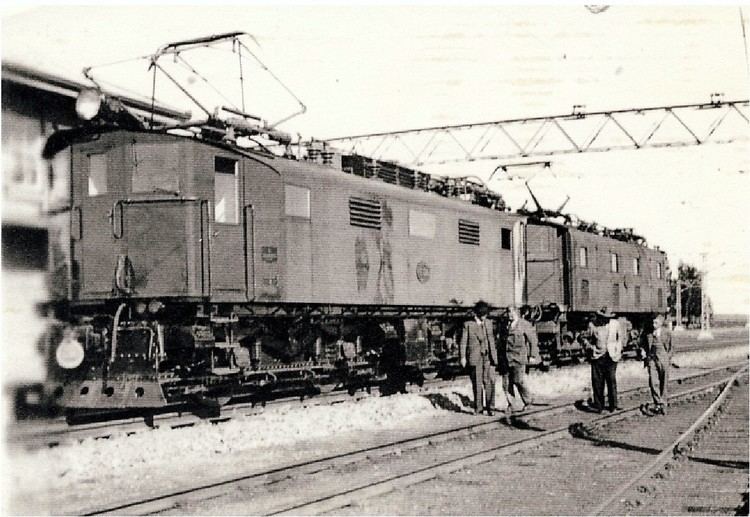Power type Electric Builder Henschel & Son Model Siemens 2E | Serial number 23132-23134 Build date 1937 | |
 | ||
The South African Railways Class 2E of 1937 was an electric locomotive.
Contents
In 1937, the South African Railways placed three German-built Class 2E 3 kV DC electric locomotives with a Bo+Bo wheel arrangement in mainline service.
Manufacturer
South Africa's second mainline electric locomotive type, the Class 2E, entered service in Natal in 1937, intended for mixed traffic haulage. The electrical equipment was designed by Siemens-Schuckert of Berlin and the three locomotives were built for the South African Railways (SAR) by Henschel and Son in Germany. Numbered in the range from E134 to E136, they were the only German-built electric locomotives ever supplied to South Africa.
Characteristics
The Class 2E was very similar in external appearance and dimensions to the Class 1E and used identical bogies. The most obvious distinction from the Class 1E was the difference in window and grille layout on the locomotive sides. The internal arrangement of their electrical components differed from those of the Class 1E and their four 402 horsepower (300 kilowatts) traction motors made them more powerful. Even so, probably as a result of the outbreak of the Second World War in 1939, only these three were ever acquired, after which the SAR reverted to the Class 1E, Series 5 to 7, for its subsequent acquisitions of similar electric locomotives.
The body of the locomotive is divided into a high tension chamber and a low tension auxiliary machine and equipment compartment, with a side corridor along the right side of the locomotive when looking towards Cab 1. In the high tension chamber, 43 contactors are arranged along one side, with the motor-generator set in the middle of the chamber. The motor-generator was a four machine unit, comprising a high tension motor, two DC excitors, one for each motor, and the 110 V generator for the auxiliary equipment. The machines were flexibly coupled, with blower fans directly coupled at each end of the four-unit set, each supplying air to two of the main motors.
The Class 2E had a Bo+Bo wheel arrangement with an articulated inter-bogie linkage. Like the Classes 1E, 3E and 4E, it had bogie-mounted draft gear, therefore no train forces were transmitted to the locomotive body.
Orientation
These dual cab locomotives had three windows with a grille between each pair of windows on one side, and a line of five grilles and two windows on the other side. When observing the locomotive from the side with the five grilles, the number 1 end of the locomotive would be to the left.
Service
The Class 2E could be, and were, utilised in multiple working with Class 1E units, but this did not apply to regenerative working. They spent most of their years in service on the mainline between Transvaal and Natal and, by 1946, were mainly employed working between Pretoria and Johannesburg. They briefly served in the Western Cape near the end of their service lives. They were withdrawn from service in 1973.
Illustration
The main picture shows a Class 2E locomotive, with its right side and no. 2 end visible, coupled to a Class 1E locomotive.
